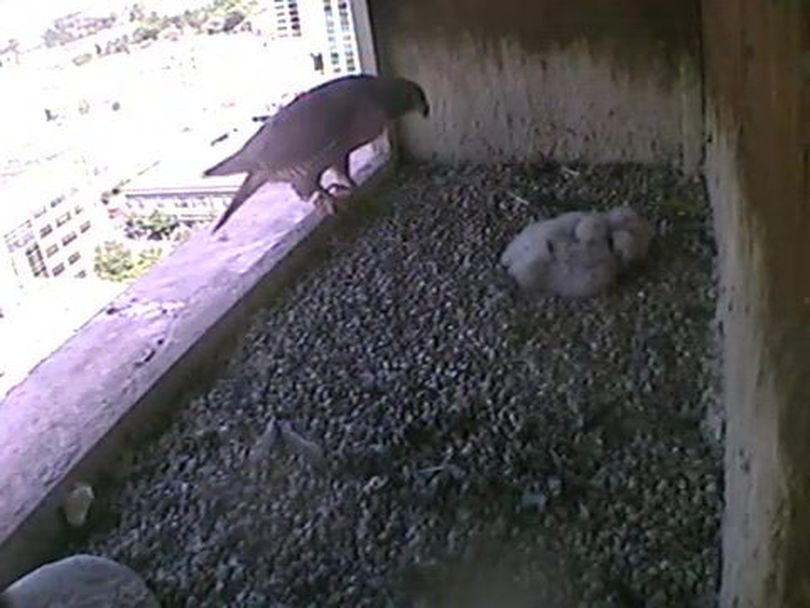Four fuzzy Peregrine falcon chicks are in downtown Boise nest box

All four eggs in the downtown Boise Peregrine falcon nest have hatched, and the fuzzy chicks can be seen on the Falconcam, huddling together for warmth or moving around; periodically, viewers have spotted the adults feeding the chicks. The first of the four eggs hatched on May 5 and the fourth one on Friday; the nesting box is located on a 14th floor ledge at One Capital Center, the office building at 10th and Main streets. The nest box has been used by once-endangered Peregrine falcons each spring since 2003; the spot mimics the high, steep cliffs falcons use in the wild, and generations of falcons have now been successfully reared there.
Peregrine falcons had essentially disappeared from Idaho in 1974, but the Peregrine Fund’s captive-breeding program started releasing them back into the wild in 1982. Eight falcons were released in downtown Boise in 1988 and 1989; there are now at least two dozen breeding pairs in the state.
The Falconcam is sponsored by the Peregrine Fund, Idaho Department of Fish and Game, and Fiberpipe Data Centers; you can watch live here. Erin Katzner, director of community engagement for the Peregrine Fund, said it takes five to six weeks after hatching before the chicks will be “fully feathered and ready to fly.” Periodically during this time, the parents will brood the chicks, covering them up to keep them warm, especially when temperatures drop. Within a few weeks, the chicks will begin moving around and flapping their wings to build up their muscles in preparation for fledging – leaving the nest and learning to fly and hunt on their own. “Come fall, they will disperse and migrate and find their own nesting areas,” Katzner said.
Many birds of prey don’t make it through their first year on their own, Katzner said, but for those that do, a typical lifespan for a Peregrine falcon in the wild is 15 to 20 years.
